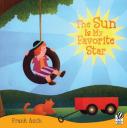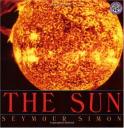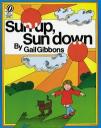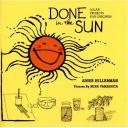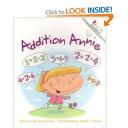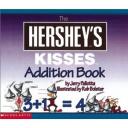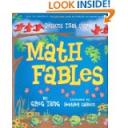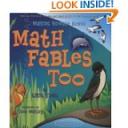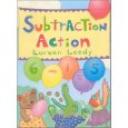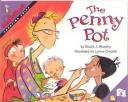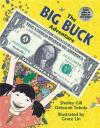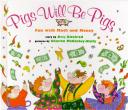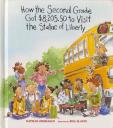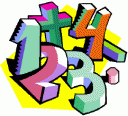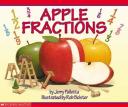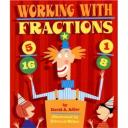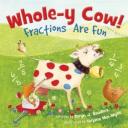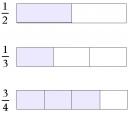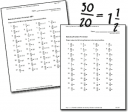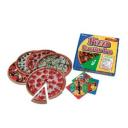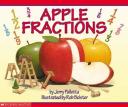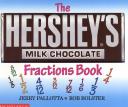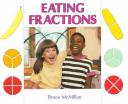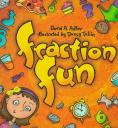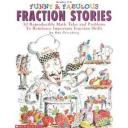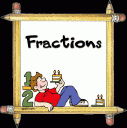
Introduction
This instructional resource set was developed to meet the criteria of Virginia Standard of Learning 2.3. This number and number sense math Standard of Learning states that second grade students will identify the part of a set and/or region that represents fractions for one-half, one-third, one-fourth, one-eighth, and one-tenth, and write the corresponding fraction. Although this instructional resource set was designed for a second grade unit on fractions, it can be adapted for first and third grades as well.
Below you will find information regarding the 5 books I thought were best to help kids understand this wacky world of fractions, as well as some great online resources for students that will allow them to further explore this topic. This blog also contains additional resources for supporting instruction. You will find songs, videos, links to websites, sample lesson plans, and more! Check out each link and enjoy!
Text Annotations
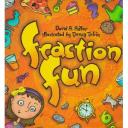
Fraction Fun by David A. Adler and illustrated by Nancy Tobin contains colorful, fun, and informative illustrations all the while providing a clear and concise definition of what a fraction is – it is part of something else, part of a whole! This book uses the whole pizzas and individual slices to demonstrate the different aspects of a fraction, namely the numerator and the denominator. When you are using this book in a lesson or a unit, read it on a “Pizza Friday” when the kids can reference the examples first hand – and enjoy the yummy side of fractions!
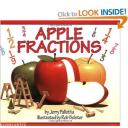
Apple Fractions by Jerry Pallotta and illustrated by Rob Bolster directly corresponds to the portion of the SOL about fractions as part of a whole. Bolster’s illustrations of pieces of apples throughout the book serve as a great model of a fraction in a real life setting. The best part about this book, other than the fun elves found chopping up the apples, is the fact that it shows the fraction in number form as well as written out in a complete word. I love that students will be able to see 1/2, relate it to the word “one-half” and understand what that concept means.
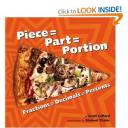
Piece, Part, Portion by Scott Gifford and illustrated by Shmuel Thaler is a 3 for 1 book. This book touches on fractions, decimals, and percents – a must-have for elementary classrooms! The text and illustrations in Piece, Part, Portion, wonderfully demonstrate that each of those three mathematical ideas describes the same concept: they are all part of a larger whole. This book also provides examples of how we use fractions in everyday life and just don’t realize it. Ask your kids if they agree that one shoe is 1/2 of a pair of shoes. If they are hesitant or resistant to that idea, flip through the book to show them the example in the text! Although parts of this book may be better understood in a 3rd grade classroom, it still serves as a great instructional tool!
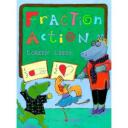
If you are wondering how to introduce fractions to your second grade class, look no further! The expert teaching of Mrs. Prime, the friendly hippopotamus in the book Fraction Action by Loreen Leedy, serves as a great help! Mrs. Prime teaches fractions to her class, a bubbly group of fun animals by cutting a sandwich in half, selling lemonade, and using other real life applications of food, art, and everyday objects. For a class of active kids, animal lovers, or students who want to learn fractions, this book is perfect!
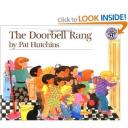
The Doorbell Rang by Pat Hutchins will make your students hungry for more information about fractions! This cute book depicts a make-believe story about a mother, adorable referred to as Ma, who makes a dozen cookies for her two kids. Ma’s kids are thrilled when they smell and see the cookies because they think they get to eat all twelve cookies. As soon as the kids can share that thought, the doorbell rings and a friend comes over. Ma offers cookies to all three of the kids, but, as soon as she puts the plate on the table, the doorbell rings again and more kids come over! This pattern continues until there is one cookie left. The kids decide to split the remaining cookie in half because they decide that is the most fair way to split up the treat. Check out this mouth-watering book for more fun situations involving fractions!
Web Annotations – Let your students check out these interactive websites!
Fishy Fractions is a great interactive game with catchy music that centers around a pelican eating surprises out of the ocean in the shapes of fish, circles, and other objects. Students will have to match fractions or pie graphs to the written name or the correct mathematical representation of a fraction.
This Red Fish Fraction Introduction video does a great job of slowly, accurately, and creatively introducing the basic parts of a fraction! I would suggest students watch this short minute and thirty second clip at the beginning of their fraction unit.
This Jamaican Jam Session Cartoon video uses pie to explain that each part of a pie is part of a fraction. Our fun eclectic singer explains that a fraction has a denominator that goes beneath the line and the denominator, in the case of this video, shows how many slices the whole pie contains. Our friend goes further to explain that a fraction also has a numerator and the numerator goes about the line. In the case of the Jamaican Jam Session video, the singer explains that the numerator represents the number of slices he has. This mesmerizing video will have you singing about fractions all day!
Fraction Flags is an online website that lets kids, especially artists, flourish and express their creativity. Who ever said fractions couldn’t be fun to learn about? This website allows kids to draw and design different flags using different combinations of halves and quarters.
The Naming Fractions interactive game shows pictures of different shaded shapes and lets the students fill in the numerator and denominator! This game is a great way for students to see where they are in their knowledge of fractions.
Additional Resources – Teachers, check out these resources!
This Fraction Activity online game can be used by students or teachers! If you have access to a SmartBoard I would suggest using this game in the classroom as an introduction to fractions. Each student can come up and insert numbers from a small bank of numbers to create a new fraction. Students can choose to have their fractions represented by pizza, numbers of people, gallons of water, or a chocolate bar. This is a great hands on activity to get the kids up and moving, and most importantly, understanding that fractions represent part of a portion or part of a whole.
This Cookie Fraction lesson plan is designed as an activity to follow the reading of The Doorbell Rang by Pat Hutchins. Not only does this lesson provide kids with a hand on experience to different fractions, namely halves, thirds, fourths, eights, and tenths, this lesson also fosters group work and cooperation.
Still hungry for more fractions? This Fraction Pizza lesson plan can serve as a great follow up to a few of the previously mentioned books that incorporated pizza in their illustrations. This lesson plan can also be great for teaching an introduction about adding and subtracting fractions with like denominators.
This M & M’s lesson plan is designed to improve students’ understanding of fractions by using the tasty candy M & M’s. In this lesson, students will sort their candy by color, and then write out, both long hand and numerically, the fraction that represents how many of their M & M’s are that color. This lesson is a fun way to help students understand what fractions are and how to use them.


